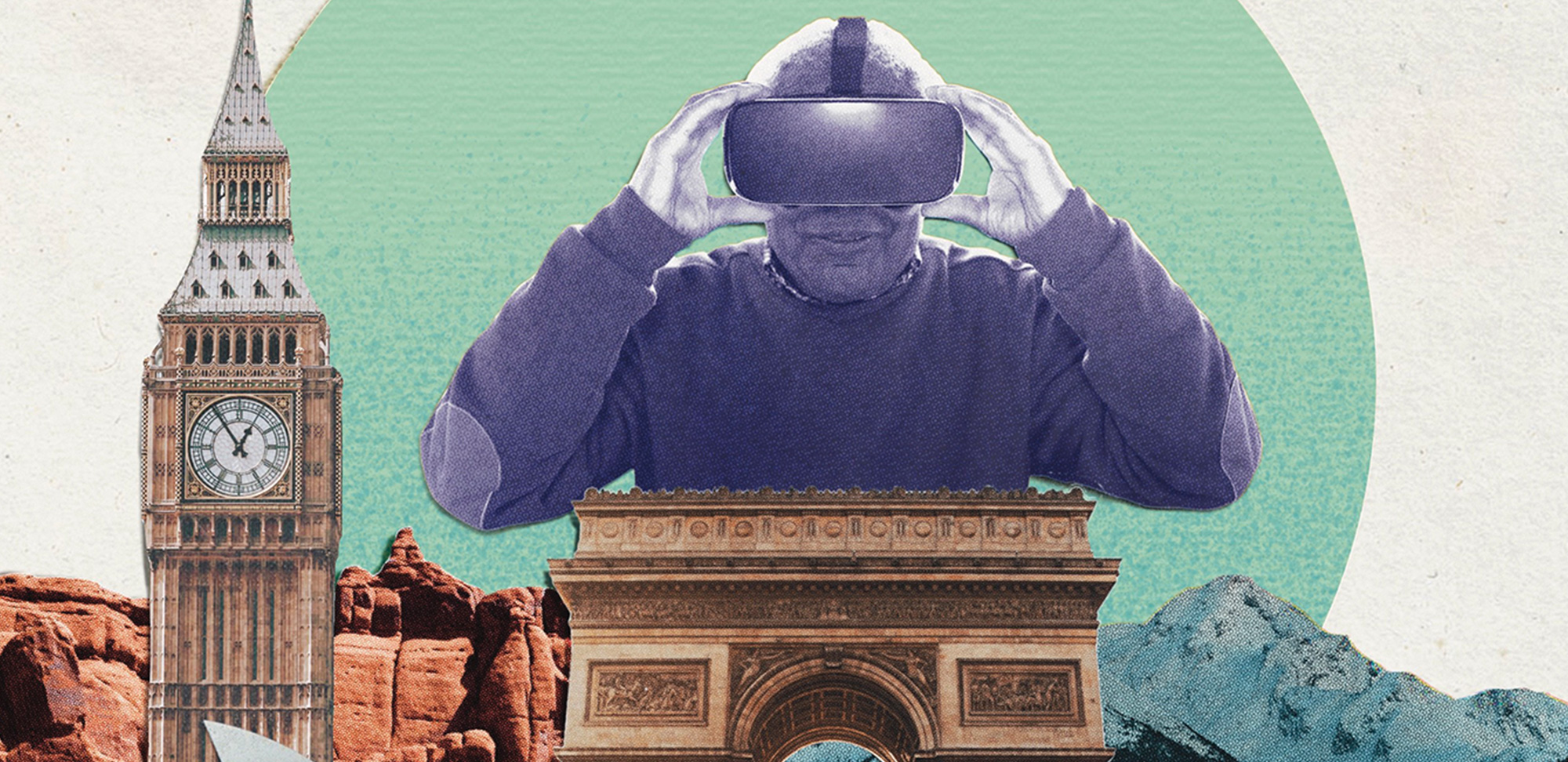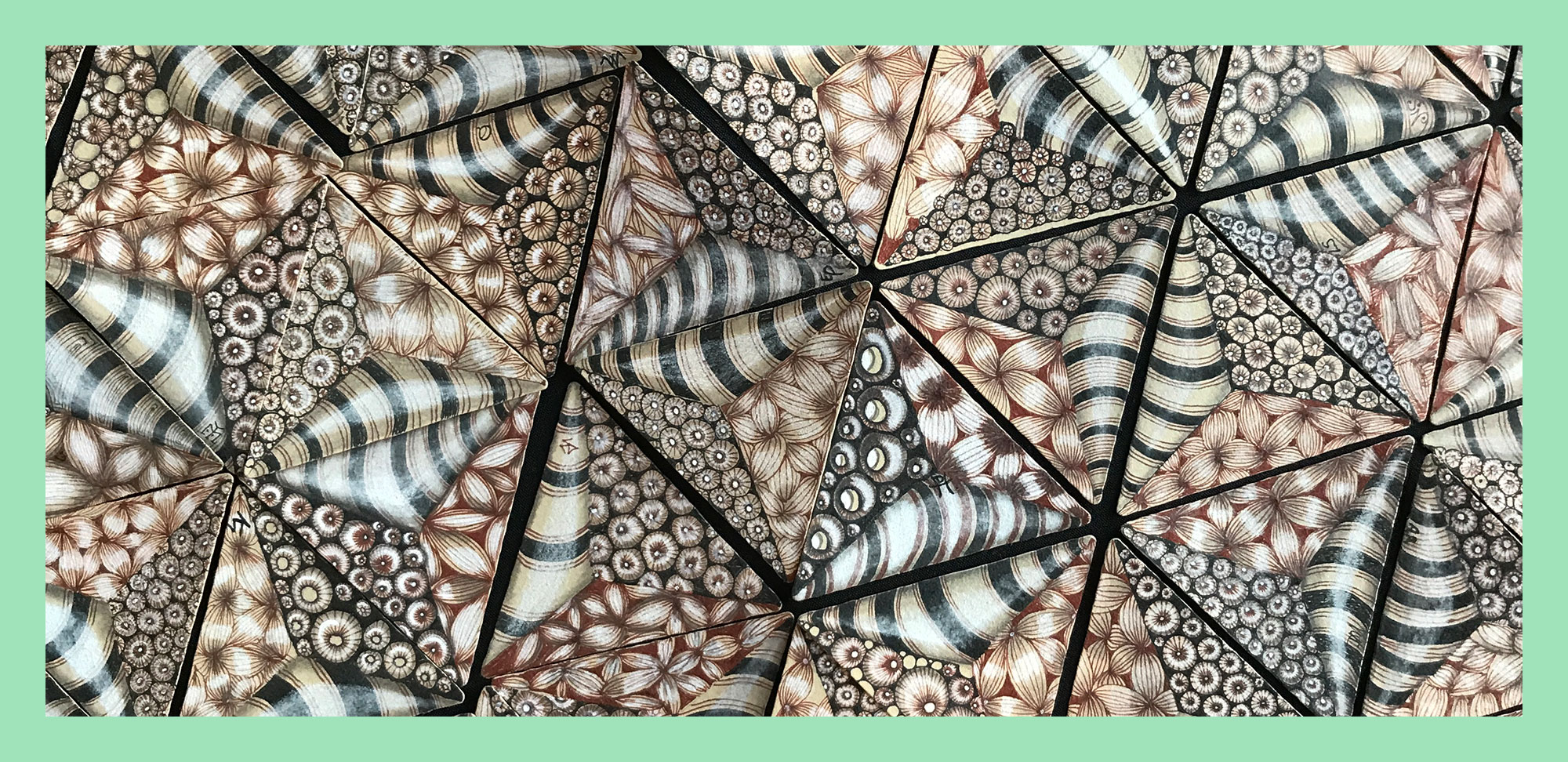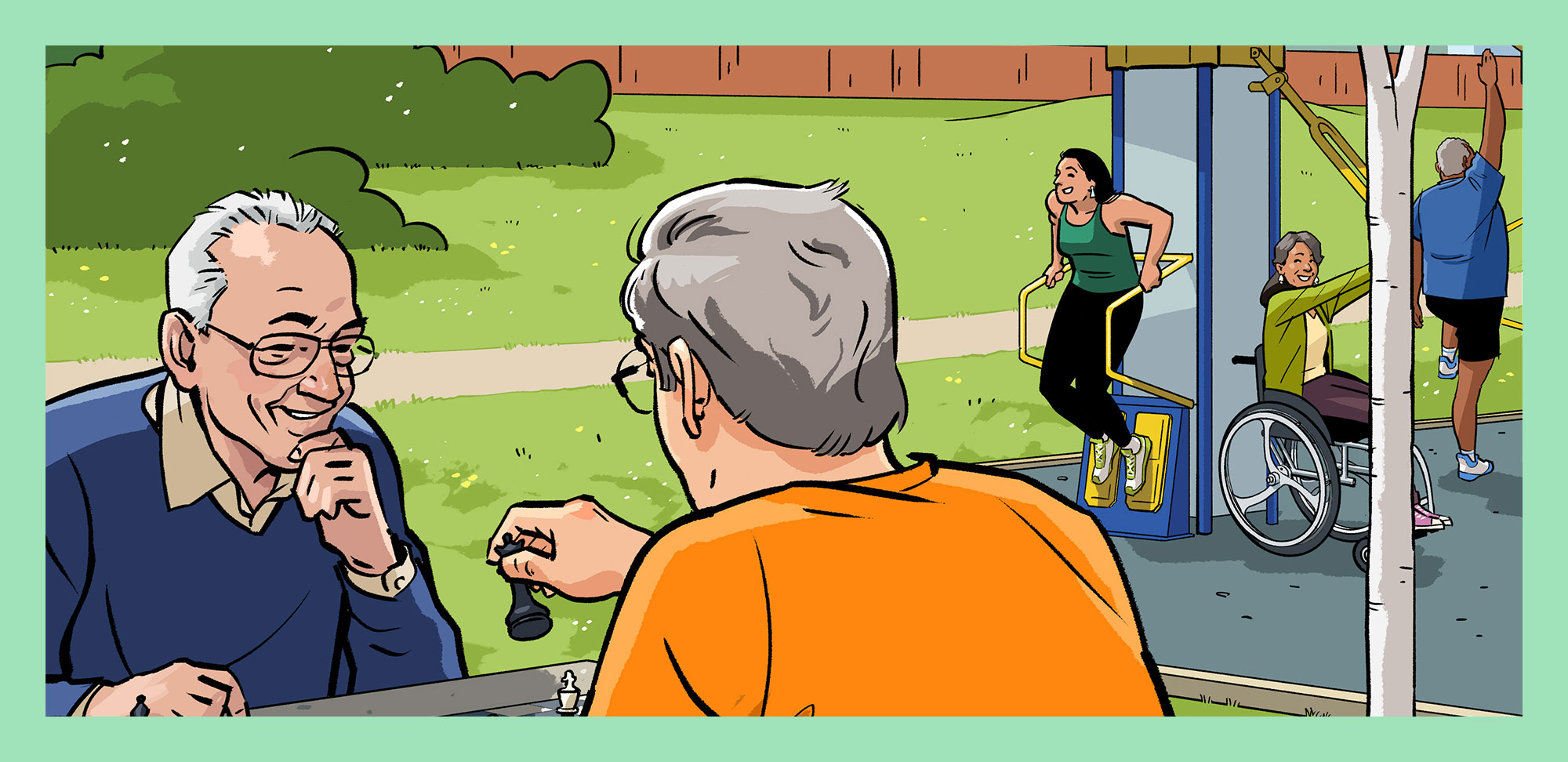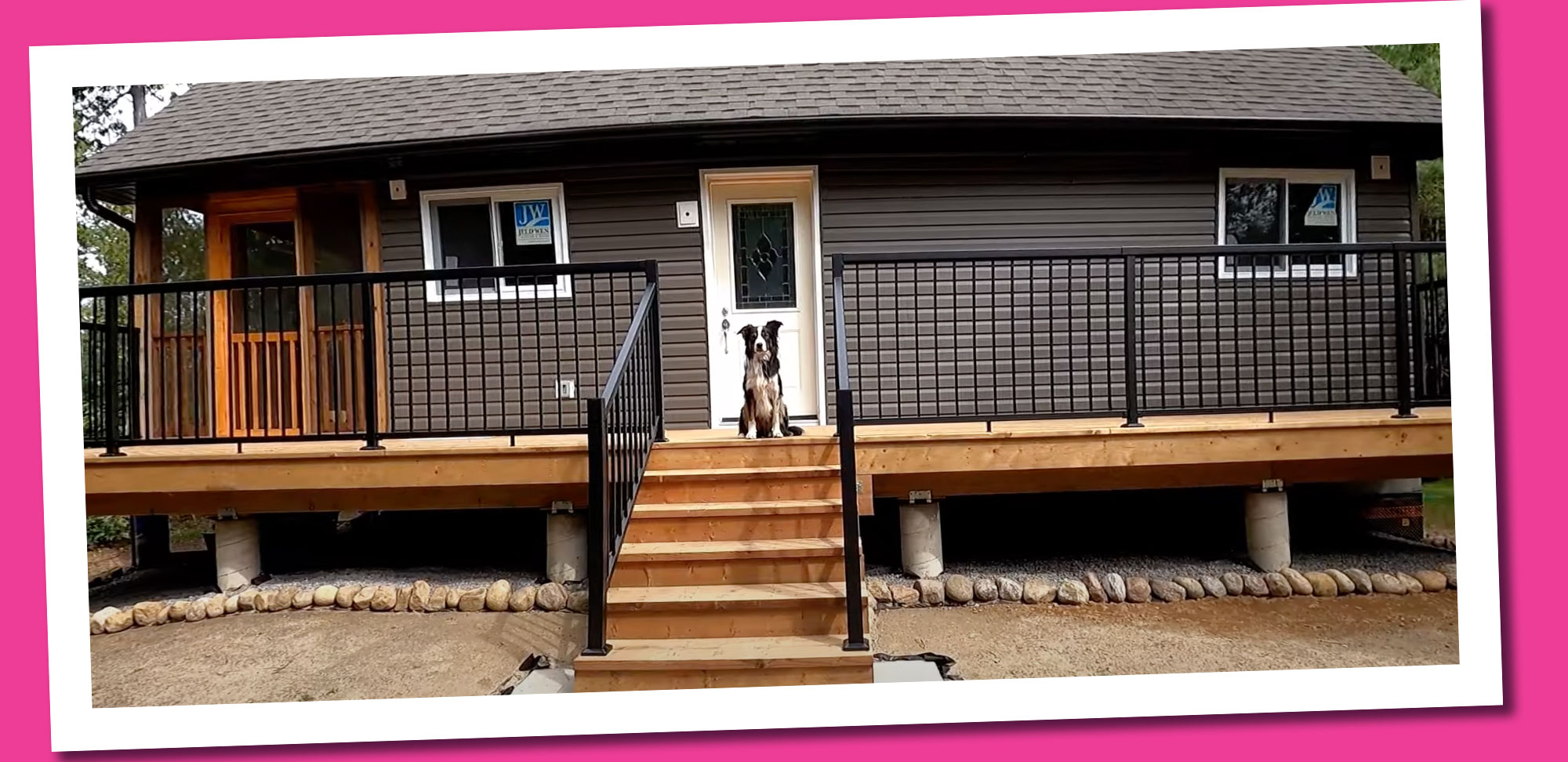Illustration by Nikki Ernst
People travel for lots of reasons. For some, experiencing new places, people and cultures expands their worldview. Other people are after adventure — they want to test their limits. And sometimes people just want to relax and recharge.
But travelling isn’t just fun and exciting; it’s a wellness booster, too.
While looking after your physical and mental health is a given, “you also have to feed your soul,” explains Shawna Leigh Clark, a wellness coach whose clients are mostly in their mid-50s to late-70s.
“[Travel] gets you out of the routine, out of the mundane, out of your comfort zone,” says Robin Esrock, Canadian Geographic columnist and author of The Great Canadian Bucket List. “And, when you do those things, your life gets enriched.”
Travel also provides stress relief for some — a good reminder that there’s more to life than everyday responsibilities. “[Travel] allows people to have a wider perspective. I think people get a better sense of what’s important in life,” says Clark. “I think travel can help some people find a way to get a better life balance.”
And travel can be like going back to school. “At the very cornerstone of this idea of travel is curiosity, the idea that we want to learn more — whether it’s about food or culture or history or nature. We want to learn more about this world we live in,” says Esrock. “And what a time to live in for the curious. We’ve got more access to more resources and information than any other culture in history. It’s there for the picking.”
Learning new things means using your brain, and, Clark reminds, “it’s very important as we age to be learning new things, to keep our brains sharp.”
“The reality is, there are a lot of people who — due to an accident or something beyond their own control — don’t have that ability [to travel in person],” says Clark.
So, if you have limitations on travelling in person, can you reap these wellness benefits if travelling is not possible?
Yes, you can! Travelling virtually can provide just as many benefits as actually being there. And you’re not restricted by available flights or worried about safety concerns; there’s no jet lag and no worry about bad weather spoiling your trip.
Reading is a great way to travel, according to Esrock. “All books are travel books. If it’s history, you’re travelling back in time; if it’s science fiction, you’re travelling into the future. You’re going on a journey.”
There’s also virtual reality. “One of the upsides of the pandemic has been this huge cultural shift and technological shift into virtual experiences,” Esrock says. “Suddenly, every museum worth its salt has an amazing virtual tour.”
Taking this a step further, armchair travellers can engage in an immersive experience by donning VR headsets. “People are putting on headsets and streaming Machu Picchu and Antarctica, where you can travel back in time and into the future, and learn about things without leaving your home,” Esrock says. “I always say, when my bones are too old to let me travel, I’m going to get myself a VR headset and go everywhere.”
“If you’re unable to physically go someplace and experience the culture, if you’re a person who gets as much out of experiencing somebody else experiencing it,” says Clark, “you’re going to get benefits. If it engages you in such a way and it sparks some joy in your life, then it’s served its purpose.”
Being there
The virtual reality program at Columbia Forest Long Term Care Centre in Waterloo, Ont., just rolled out again in spring 2022 after COVID shuttered most social events. (The centre piloted the program in 2019.)
“The headset is a little intimidating,” says Shalagh Cassidy, the centre’s recreation manager, “so we normally have to take it to a resident, show it to them and explain to them what’s going on, and then have them try it on. If it’s something that connects with them, they adapt really quickly.”
A volunteer sits beside the resident with a tablet; this allows the volunteer to see 2D images of what the resident is seeing in 3D. With the headset on, the resident can also hear any sounds, such as rushing waves or blowing wind or music related to the video.
There are any number of experiences: riding on a Mardi Gras float, flying a biplane, ascending in a hot-air balloon, skydiving, or walking amongst the cows in the Alps (and hearing the cowbells), a camel ride in the Sahara (“You literally felt like you were on the camel,” says Cassidy, “and when you turned your head, you could see the other camels and the legs of the people riding”), swimming with dolphins (“For residents with mobility issues, you’d see them try to paddle, or, if they were lying in their beds, they would kick their feet because they actually thought they were in the water”).
For one resident, a nun, the volunteer suggested they go to Vatican City and see the Sistine Chapel. “She just blossomed. She was so excited,” says Cassidy. “The resident said, ‘I think we need to pray’ and began an ‘Our Father.’” When they finished the excursion, she actually broke into a hymn.
“She’s not a very verbal person in general,” says Cassidy, “so to have that interaction was really exciting.”
Sources to start your virtual travels
earthcam.com — Check out live webcams in major cities around the world. Count the yellow taxis in New York’s Times Square, or watch revellers come and go at Dublin’s Temple Bar.
heygo.com — Enjoy a livestreaming platform for interactive travel and cultural experiences, hosted by local guides. Sign up and book tours for free. You can also leave an optional tip.
Virtual tourism — Watch interactive videos online. Explore the Great Barrier Reef (attenboroughsreef.com), hosted by broadcaster and historian David Attenborough. Head to Dubai (dubai360.com/scene/389-above-dubai-marina-8/en) or vacation in Bristol (visitbristol.co.uk/bristolfromhome) from your couch.
Books — Immerse yourself in the pages of esteemed travel writers. Check out 24 famous ones from The Uncorked Librarian at theuncorkedlibrarian.com/travel-writers/. Or, simply delve into a great historical or science fiction novel.
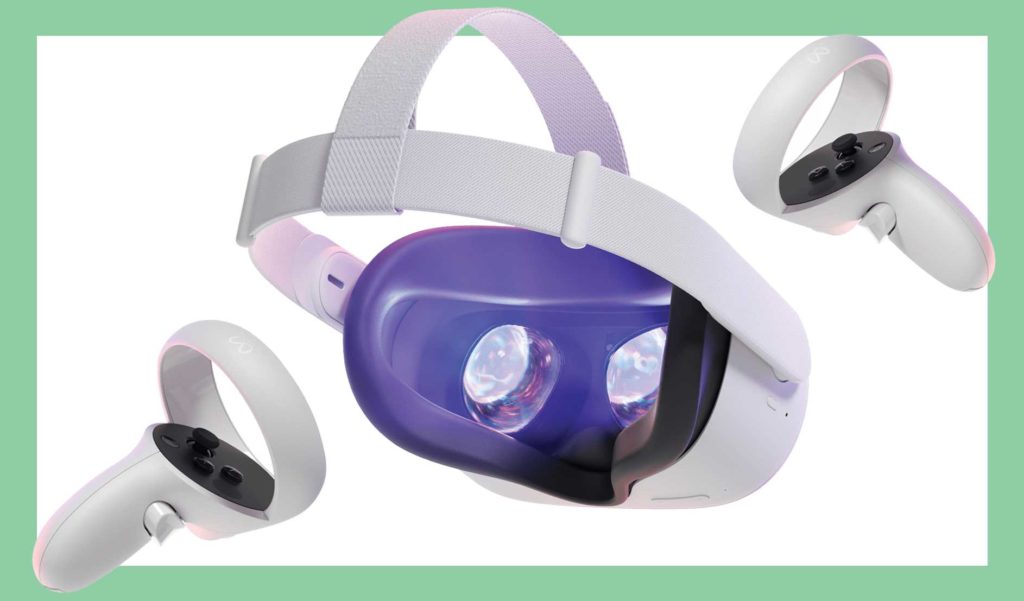
Heads up
A virtual reality headset is essentially a helmet-like apparatus mounted in front of your eyes. The technology makes 3D images appear to float in front of you. Each eye receives different perspectives of the same 3D image; that causes the brain to think it’s coming from slightly different directions. Sensors in the headset track how you interact with the virtual space.
A stand-alone VR headset (which works entirely on its own with no additional technology or equipment, like the Meta Quest 2) will cost between $500 and $700. There are less expensive headsets, but they require connectivity to a console or use with a cellphone. You can purchase most versions through Amazon or at Best Buy.
